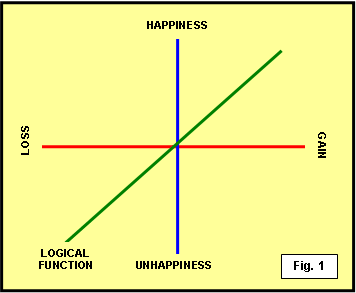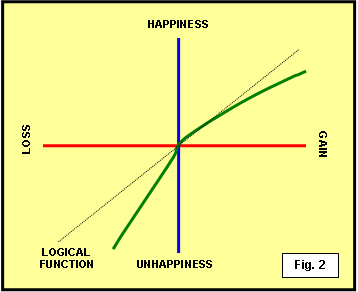


| Framing - an important Negotiation Tool |  |
| This article examines the Framing and Re-Framing Reframing negotiation tool. A frame directs the observer to focus on a feature of an issue within the frame and to disregard other features of the same issue which fall outside this frame. |
Although framing has over the past decade or two, primarily due to the research of Kahnerman and Tversky, enjoyed increasing attention, and has become a key variable in the negotiation equation, it is unfortunately poorly understood by many negotiators.
The use of framing dates back to the time of Aristotle when he used framing very effectively to portray murdering villains as laudable patriots and thus achieve their acquittal.
| DEFINITION* A frame offers perspective by managing the alignment of the observer in relation to an issue.* A frame directs the observer to focus on a feature of an issue within the frame and to disregard other features of the same issue which fall outside this frame.* A frame influences subsequent judgement in that it organises and tailors information to fit into it. It therefore not only contains, but also constrains. |
Of the many examples of framing that come to mind, the O. J. Simpson trial is probably one of the best. From the opening frame provided the judge, O.J. innocent or O.J. guilty, the prosecution chose to reframe the trail as, O.J. the male wife-beater vs. the female victim, and the defence opted for, O.J. the ethnic minority victim vs. the racist police force. The frame the jury chose to adopt determined the verdict handed down.
We often use framing when we develop a rationale why we should do something or acquire a certain product or service. Take the example of a person who enters an audio-visual outlet to decide whether he or she should purchase a surround sound system (frame: surround sound system vs. no surround sound system) and ends up buying an expensive system due to one of the following forms of framing:
- Reframing the initial decision, namely buy vs. not buy, to home entertainment vs. expensive cinema/ theatre outings. Through skilful reframing the person justifies the purchase of an expensive surround sound system - "It will obviate the need to in future spend money on expensive cinema and theatre tickets, will bring far greater enjoyment when watching television shows, DVD's and video's, will keep the family at home, and will effectively stop the costly tendency to eat out after cinema or theatre shows."
- Allowing the salesperson to create a focus negotiation frame that justifies the purchase of an expensive surround sound system - "People who buy these systems save the cost of the system within one year by enjoying a movie and theatre experience of the highest quality in their homes together with their families. These systems revived family life as we knew it in the good old days!"
- Falling prey to a contrast frame where the salesperson cleverly moves the focus of the decision away from what the person can afford to spend on an expensive surround sound system, by getting the person to support the importance of restoring traditional family values, and then reframing the purchase in the following way - "Although this investment may at face value seem rather large, this is definitely not the case. Our instalment plan will only require you to spend the monthly equivalent of one case of beer. Surely your family is more important than the cost of one case of beer?"
In their research on framing Kahnerman and Tversky developed a theory on why people make conservative or risky decisions. According to this theory, which they termed prospect theory, people were more influenced in their decision-making by the prospect of a loss than by the prospect of an equivalent gain. Subsequent research clearly demonstrated that humans do not weigh losses and gains logically, but rather tend to choose options with the highest subjective value, irrespective of whether these options deliver the highest objective gain.
If a perfect match existed between the real gain and the psychological experience of a person picking up a £:100 note, this person should be five times as happy as someone picking up a £:20 note. The opposite then naturally also should be true for a person losing money. If this logical relationship were to be plotted on a vertical axis (happiness at the upper end and unhappiness at the lower end) and a horizontal axis (loss on the left and gain on the right) the following graph would emerge:

If judgements were always logical there should be a perfect correlation between the increase in good fortune and the increase in happiness (see Fig. 1). This is, however, not the case. Finding a £:1 coin is inclined to result in a degree of happiness that is not exactly replicated when additional £:1coins are found. Although each additional coin undoubtedly generates happiness, the extent of that happiness decreases for each additional coin found.
In the case of the loss of a £:1 coin the green line drops quicker than it rose when a gain of £:1 was experienced, thus indicating that the pleasure of winning is less intense than the pain of loosing. Kahnerman and Tversky depict this graphically (see Fig. 2):

In the upper right "gain" quadrant the value increases somewhat more quickly in the lower happiness range, levelling off in the higher happiness ranges, thus indicating that a small gain is very efficient at making a person happy. In the lower left "loss" quadrant the line dips sharply below where the logical 45% line should be and remains there, thus demonstrating that losses are experienced more strongly than would logically be expected. The loss line dips more sharply than the gain line ever rises, indicating that humans would rather not win than lose, as losing tends to hurt more than is actually the case.
| PROSPECT THEORY: LOSSES ALWAYS LOOM LARGER THAN POTENTIAL GAINS* The first priority is not to lose - humans are loss averse.* Gains are secondary to not losing.* Framing a decision in terms of possible loss motivates a person more strongly than framing it in terms of possible gain. |
Because losses appear larger than gains, humans tend to adopt conservative strategies when confronted with a positively framed problem, and risky strategies when confronted with a negatively framed problem. To demonstrate this Khanerman and Tversky asked a representative sample of physicians to respond to the following question:
"Imagine that the U.S. is preparing for an outbreak of an unusual Asian disease, which is expected to kill 600 people. Two alternative programs to cot the disease have been proposed. Assume that the exact scientific estimate of the consequences of the programs areas follows: If program A is adopted, 200 people will be saved. If program B is adopted, there is a one-third probability that no people will be saved and a two-thirds probability that that all people will be saved. Which of the two programs would you favour?
Given that the problem was positively framed, 72% of the physicians opted for program A, the safe and certain strategy, and only 28% for program B, the risky strategy.
Simultaneous to asking the first group of physicians to respond to the positively framed problem, they also asked and equivalent group to respond to the same problem that had been negatively framed.
"Imagine that the U.S. is preparing for an outbreak of an unusual Asian disease, which is expected to kill 600 people. Two alternative programs to cot the disease have been proposed. Assume that the exact scientific estimate of the consequences of the programs areas follows: If program C is adopted, 400 people will die. If program D is adopted, there is a one-third probability that nobody will die and a two-thirds probability that 600 people will die. Which of the two programs would you favour?

Although the two questions were identical - 200 of 600 people saved being the same as 400 of 600 lost - physicians responded very differently when confronted with a negative frame. Only 28% then voted for program C the conservative strategy and 72% for program D the risky strategy.
By changing the frame from positive to negative there was an almost perfect reversal in the choices of professional persons in their field of expertise. Changing the frame from positive to negative strongly influenced the way they perceived the problem - saving lives or not losing them.
The medical fraternity is often highly puzzled by the irresponsible way in which men over the age of 40 deal with the danger of prostrate cancer. Despite a wealth of freely available information they seemingly prefer to die rather than comply with the need for regular medical examinations. Seen from a logical perspective men should have no problem in regularly submitting to a safe procedure which could ensure their future health. Psychologically, however, this poses a risk, as the examination could reveal something men prefer not to know, cancer. By not availing themselves of regular medical examinations they ensure that nothing is found which could cause them great distress.
In an investigation conducted by Meyerowitz and Chaiken in which they distributed two sets of brochures with identical content to equivalent groups of patients in equivalent clinics - one set emphasising the gains related to breast self-examination (BSE) and the other set emphasising the losses associated with not performing BSE - there was a significant increase in positive BSE attitudes and behaviours amongst the group of patients who received the negatively framed brochures: a change that was still evident four months later.
Given our positive bias as humans we overwhelmingly expect good things to occur. Negative information is more persuasive as it does not confirm these positive expectations and therefore tends to jolt us out of our comfort zones. Furthermore, we also tend to more intensely examine information which does not confirm our expectations and to ascribe extra weight to such conflicting information during our decision-making process. We could best explain this by asking ourselves whether we would send our family to a doctor who is known to be exceptionally competent, but recently botched a tonsillectomy performed on our neighbour's child. The answer clearly will be no, given that negative information overwhelms positive information. We would expect the doctor looking after our family to be fully competent and not make mistakes.
Although frames can be used for positive reasons, they undoubtedly can also be used for negative, manipulative reasons. Negative, manipulative frames can be countered by:
- recording the decision with vs. between the issues, asking whether those are the real issues and then reframing:
- asking what other frames could be appropriate when an open-and-shut decision is suggested (Is this truly such a simple decision, or is it made to look this way by the current frame?):
- never allow ourselves to forget that we are in charge of our frames, by frequently asking "What is important?" and then acting accordingly:
- asking what the agenda of a person is when that person stands to benefit from our compliance, and then countering with an alternate frame: and
- always remembering that anything we see or hear on TV, radio, the web or in print has been framed.
References: Kelton Rhoads, 1997Khanerman & Tversky, 1982Kanouse & Hansen, 1972 Fiske, 1980: Smith & Petty, 1996
Back to Negotiation Articles
Please feel free to share this article by republishing the contents of this page in part or full. All that we ask is you include a regular link back to this site, preferably to our www.calumcoburn.co.uk/training/ page.
|
Reader Comments
Average Reader Rating:
share your comment |
|
|
No comments |






Reader Comments
Average Rating:
Total Comments: 0